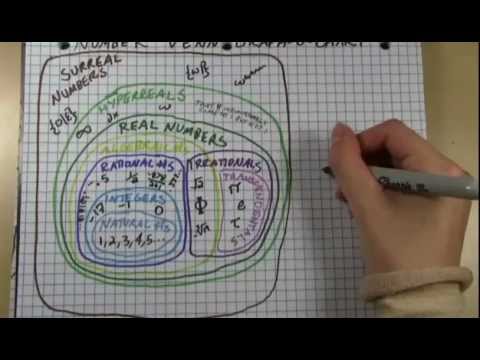Easy but Not Too Easy Math Questions
Remember that time we totally stumped you with five seemingly simple math problems that actually twisted your brain up in knots? Well, we're at it again.
Here are four more super simple problems that will actually confuse the crap out of you!
1. The Speed Addition Test
Let's start out easy. Add the following numbers from top to bottom as quickly as you can in your head.
More From Seventeen

Did you get 5000? Well, that would be... wrong.
The Answer: 4100
The Explanation: This is just a simple case of your brain getting ahead of itself. You were probs totally on a roll until you got to to the last addition.
1000 + 20 = 1020 (Right.)
1020 + 30 = 1050 (Totes.)
1050 + 1000 = 2050 (Yup.)
2050 + 1030 = 3080 (Mhmmm.)
3080 + 1000 = 4080 (Yassss, almost done!)
4080 + 20 = 4100
Errrr, what?! You def didn't get that before.
It seems totally obvious now that it's all done out slowly in front of you, but what made you slip up on that last addition the first time around is that when you were adding everything up quickly in your head, you never had to carry any ones until the very end, and when you finally do have to carry a one, you accidentally added it to the thousands spot rather than the hundreds because you were going so quickly. Or maybe you didn't spot the 30 in the 1030 of the third to last line.
Or, maybe you're just a genius and you were right the first time in which case, good on you!
2. Who fixed your broken water heater?
Suppose your water heater broke so you couldn't take a hot shower. You go to a person and ask them to check out your water heater. That person comes to your house and uses a bunch of spare parts and then fixes it so you pay him or her for the repairs. Is this person more likely:
An accountant?
OR
An accountant and a plumber.
Did you answer a plumber? That's understandable, but you're wrong.
The Answer: The person is most likely an accountant.
The Explanation: When you read this word problem, you intuitively jumped to the conclusion that the person was most likely a plumber because, well, plumbers fix water heaters. BUT, the question asks what is more likely, which means it's a probability question.
Strictly speaking, it's more likely s/he's an accountant than a plumber. The key to remember here is that the question asks if the person who fixes the heater is most likely an accountant or an accountant and a plumber (AKA, a plumber-accountant).
So, the probabilities are that
[A] a plumber-accountant fixed your heater (probably very small, right? Not many people are both licensed plumbers and accountants),
[B] an accountant fixed your heater (there are probs waaaaaay more accountants than plumber-accountants)
And then, in this situation, any plumber is definitely also an accountant, so you actually add those probabilities together.
A ≤ A + B
or
Plumber-Accountants ≤ Plumber-Accountant + Accountants
So, it was most likely an accountant!
3. What is the answer to the following equation?
Did you multiply the 1 x 0 first and then add the rest of the ones together and get 12? Wrong!
The Answer: The answer is 2. Yes, 2!
The Explanation: Since there are no operator symbols (+, -, x, /) at the end of each line, there's no mathematic reason to believe that each line is part of the same equation. And since an equation is a statement that the values of two mathematical expressions are equal, since there are no equal signs at the ends of the first two lines, they're not equations at all. They're just expressions. That means the only equation in the picture above is the last line, and:
1 + 1 x 0 + 1 = 2
Some argue that you should string the lines together, making the two ones at the end of each line 11s, in which case the answer would be 30 because:
1 + 1 + 1 + 1 + 11 + 1 + 1 + 1 + 11 + 1 x 0 + 1 = 30
But this isn't really mathematically sound because math isn't like English. You don't just "keep reading" onto the next line (that would cause a lot of confusion and ambiguity in math problems). If you have a long equation that must be split on multiple lines, the line break must come immediately before or after an operator symbol. So if 30 was meant to be the answer, the problem should have been written:
1 + 1 + 1 + 1 +
11 + 1 + 1 + 1
+ 11 + 1 x 0 +1 = 30
4. The value of 0.999... is?
Here's a simple question:
Well, everyone knows that putting ... at the end of three nines in a row means that 9 goes on infinitely, so you answered false. 0.999... could never equal 1, right?
Answer: Nope. Wrong. It is, in fact, equal to one. Here's a proof to prove it:
The Explanation: The reason this is so hard to grasp is because the concept of infinity is just kind complicated to grasp in the first place. Most people just imagine that there's a last 9 somewhere down the line. But the thing is, the 9s are never-ending.
It's also important to remember that just because two numbers look different doesn't mean they're not the same value. 0.5 is definitely the same as 1/2. And 2 + 2 is the same as 4. And 0.999... is absolutely equal to 1. It's just two different ways of expressing the same value.
Here's another, even simpler proof that might help you understand. We all agree that 1/3 = 0.333... repeating, right? Well, check this out:
See! It's actually pretty simple! If you're still having a hard time grasping it, let expert YouTube explainer, ViHart, explain it to you in complete detail (and with fun doodles).
This content is imported from youTube. You may be able to find the same content in another format, or you may be able to find more information, at their web site.
When I'm not holed up in my room going on a completely unproductive Netflix binge or Tumblr stalking Timothée Chalomet, I'm searching for awesome celeb news stories that Seventeen readers will love!
Source: https://www.seventeen.com/life/school/a32259/hard-simple-math-problems/


0 Response to "Easy but Not Too Easy Math Questions"
Post a Comment